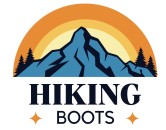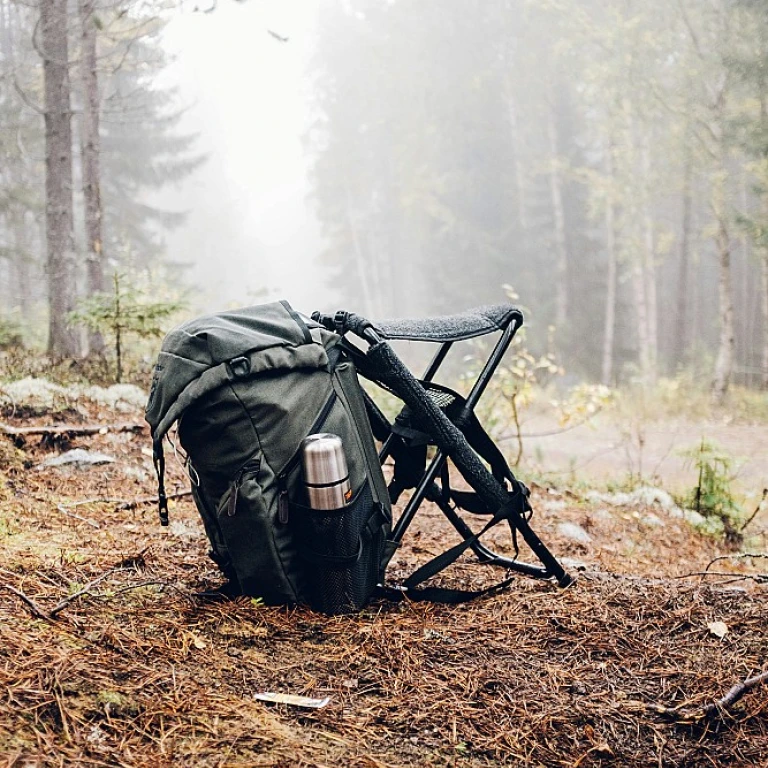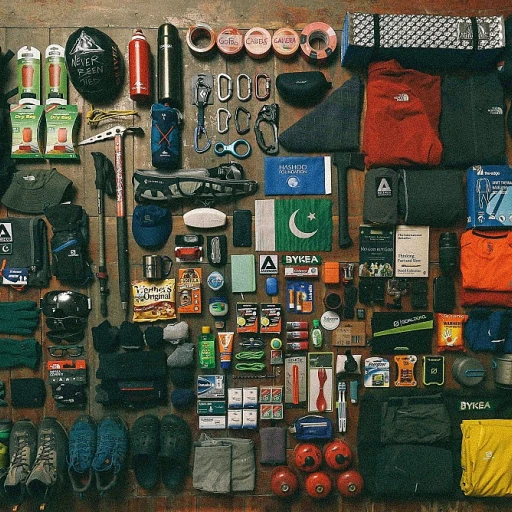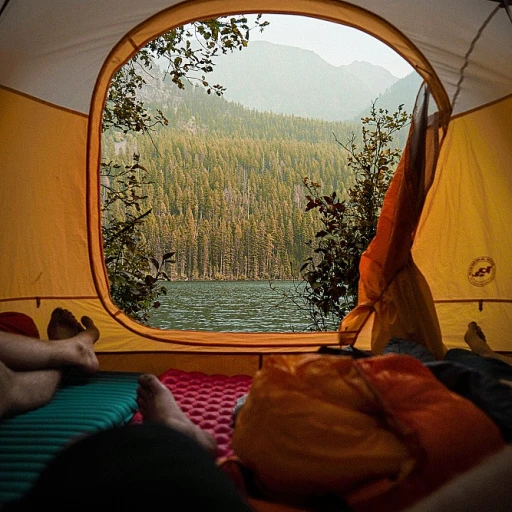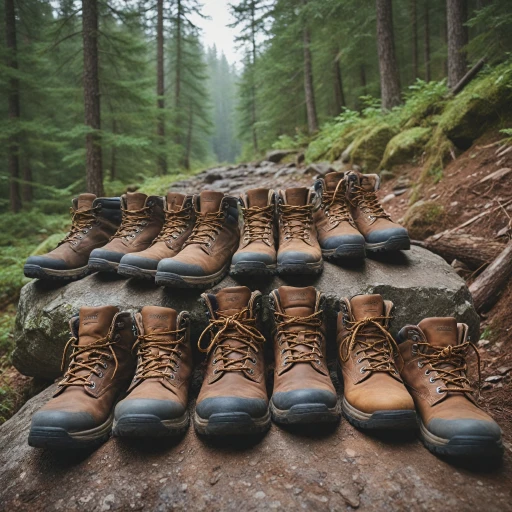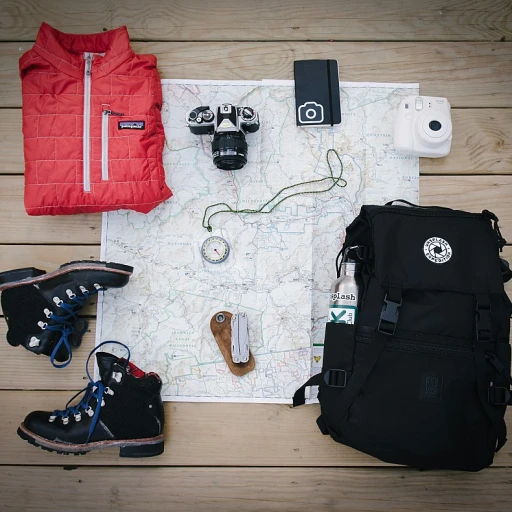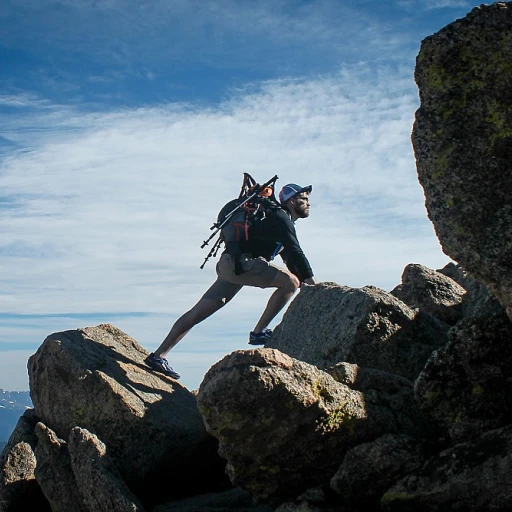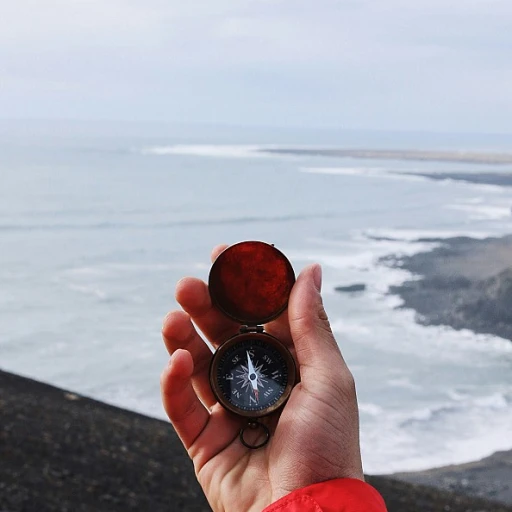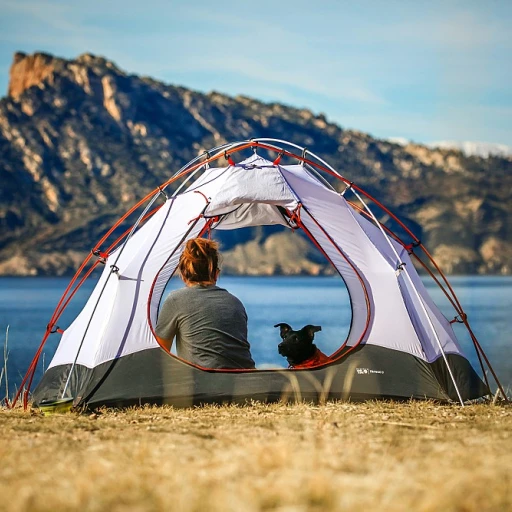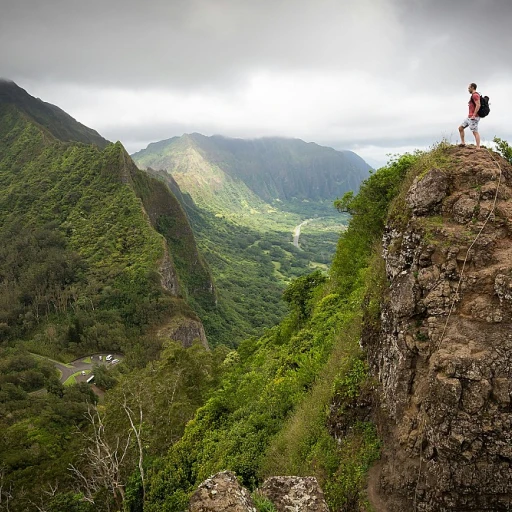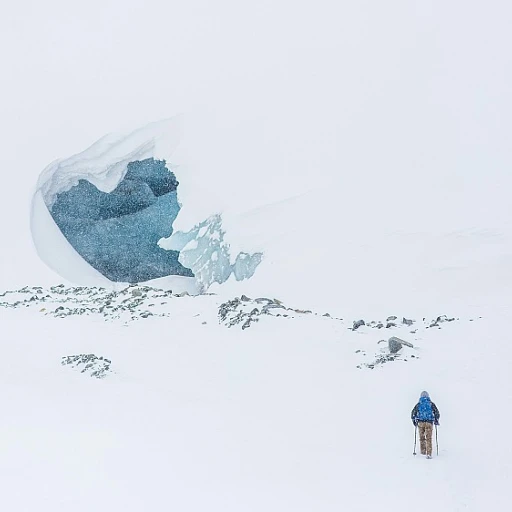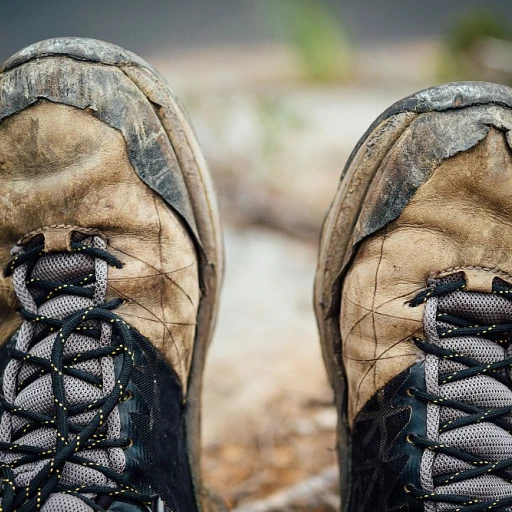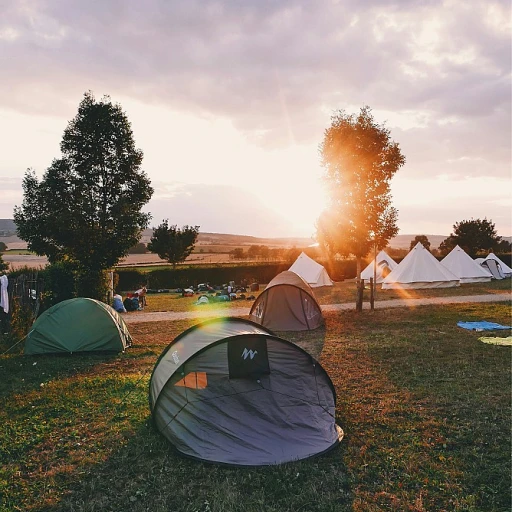
Understanding the Legacy of the 10th Mountain Division Huts
Tracing the Historical Footsteps of the 10th Mountain Division Huts
The 10th Mountain Division Huts in Colorado offer a profound connection to history, weaving tales of courage and adventure through their origins. These huts serve as a tribute to the 10th Mountain Division, an elite group of soldiers who trained for combat in mountainous and high-altitude environments during World War II. Nestled in the beauty of the Colorado Rockies, this network of huts is strategically spread across miles of pristine backcountry, inviting hikers and mountaineers to explore its rich past and breathtaking vistas. As you lace up your hiking boots for a trip through this remarkable hut system, you'll be traversing the same trails once used for rigorous training exercises. A journey to these historical spots, like the renowned Broome Hut and Uncle Bud's, leads adventurers through the diverse and sometimes challenging terrain of the national forest. From the gentle trails around Vance Cabin to the more demanding routes over Tennessee Pass, each step tells a story of bravery and endurance. Every hut, whether it's the cozy Betty Bear or the strategically placed Shrine Mountain Inn, stands as a testament to the enduring spirit of the mountains and those who navigated its perilous paths. Buildings like the Fritz Fabi Hut or Vance Cabin are not just ordinary cabins; they are milestones on the adventurous road to understanding a pivotal chapter in mountain warfare history. During both summer hikes and winter ski trips, the huts act as sanctuaries, much like the soldiers once found shelter within their walls. The unique hut system maintained by the country's hut association ensures a cohesive experience for hikers. Each cabin, road, pass, and trail adds layers to an intricate narrative that speaks volumes of the region's undying legacy. To truly appreciate the journey you've embarked on in your reliable footwear, consider reflecting on the broader context of innovation in hiking gear. Contemporary footwear advancements provide modern comforts and protection, drawing a striking contrast to the rugged conditions endured by those in the original mountain division. For those keen on learning more about distinctive footwear for such adventures, exploring the versatility of Chippewa Snake Boots is an enriching starting point.Choosing the Right Hiking Boots for Mountain Adventures
Selecting Top-Quality Boots for Your Journey
When embarking on any journey through the scenic routes of Colorado's 10th Mountain Division huts, the importance of having the right pair of hiking boots cannot be overstated. Traversing the expansive trails from the Friends Hut to the Vance Cabin, or the challenging paths around the Tennessee Pass will test both your footwear and endurance. Thus, choosing the right pair is crucial to a safe and enjoyable experience.
There are several key factors to consider when selecting the ideal pair of hiking boots for mountain adventures:
- Boot Type: For the varied terrains between the cabin system—from Aspen's winding trails to the backcountry beauty of Camp Hale—a balance between support and flexibility is essential. High-cut boots offer better ankle support, which is advantageous for routes with significant elevation gain.
- Material: The material of your boots affects breathability, waterproofing, and warmth. Leather is durable and water-resistant, making it ideal for winter trips, while synthetic materials may be more suitable for a summer trek across the Continental Divide.
- Sole and Grip: A good grip is vital for traversing the snowy high-altitude paths around Shrine Mountain or the rugged trails near the Broome Hut in the national forest. Consider boots with deep lug patterns for better traction.
- Fit: Always try boots on with the same socks you plan to wear during your hikes. Ensure there is enough room to wiggle your toes, and your heels should not slide during ascents and descents.
While exploring advanced technology in footwear, some hikers may benefit from looking into protective features. For instance, you can explore some snake-proof boots designed specifically with safety in mind to navigate regions that may have wildlife encounters.
Embarking on a journey through the mountain hut system requires thorough preparation, and ensuring you have the right hiking boots is essential to fully immerse in the breathtaking landscape and historical essence of these huts.
Challenges Faced by Hikers at High Altitudes
High Altitude Hazards: Navigating the Challenges
Venturing into the higher elevations of the 10th Mountain Division huts demands more than just physical endurance. As hikers traverse through the rugged backcountry of Colorado, they encounter unique challenges that require preparation and resilience. The route, whether via the Tennessee Pass or through the hut systems like the Broome Hut or Vance Cabin, is fraught with factors that test one's mettle. One of the primary hurdles faced is the elevation gain, a notorious aspect of this mountainous journey. The ascent can begin as innocuous as a day trip near Aspen but morph into a strenuous feat as hikers climb the trails leading to their destination. The increased altitude not only demands acclimatization but significantly impacts breathing, requiring regular breaks and hydration to adjust to the thinner air. Winter adds another layer of complication. The charm of snowy landscapes at places like the Shrine Mountain is alluring, yet it transforms hiking into an arduous ski-like adventure, demanding appropriate gear. Footwear that can withstand varying weather conditions becomes crucial as hikers navigate the national forest, where sudden snow patches or icy trails can hinder progress. Moreover, the hut system in and around the Continental Divide often includes long stretches of isolated road and uneven terrain. Communication with fellow hikers and regular contact with hut associations is advised, as unforeseen circumstances can arise miles away from any cabin or pass. Whether it’s a planned overnight stay at the Fritz Fabi hut or a winter foray into the Friends Hut, preparation for harsh realities is essential. To adequately gear up against these challenges, choosing the right hiking boots is paramount for every mountain adventure. Modern advancements have made footwear more adaptable, safeguarding you from the many pitfalls of backcountry excursions. Ensure your experience is as rewarding as the majestic views that await by thoroughly preparing for the unique trials of high-altitude hiking. For more insights on gearing up, check out the ultimate guide to women's hiking trousers that can complement your hiking boots ensemble for added comfort and protection.Footwear Innovations for the Modern Mountaineer
Revolutionizing Your Path: Innovations in Footwear for Modern Mountaineers
In recent years, advances in hiking boots technology have propelled the modern mountaineer into a new era of comfort and performance. As outdoor enthusiasts traverse the rugged terrains of the Colorado backcountry, including the scenic trails around the 10th Mountain Division Huts, these innovations provide vital support. Here’s a look at some of the game-changing features in hiking boots that are transforming mountain adventures.- Lightweight Materials: The transition from the traditional heavy boots to lighter materials has decreased fatigue on long route trails. Boot technology now includes synthetic leathers and advanced polymers that decrease weight without sacrificing durability, essential for the varied terrain from Camp Hale to Shrine Mountain.
- Enhanced Traction Systems: Gone are the days of worrying about slipping on icy trails or wet surfaces. Modern boots come with enhanced traction systems that include specialized rubber compounds and multi-directional lugs. This innovation is critical especially on the steep elevation gains found near hut routes like Tennessee Pass.
- Weatherproofing Techniques: With unpredictable weather in regions like the national forests surrounding the division huts, new weatherproofing techniques have emerged. These technologies ensure feet remain dry, whether crossing a ford in the summer or navigating snowy trails during winter ski trips.
- Smart Fit Technologies: Modern hikers benefit from boots that conform better to the individual’s foot shape, significantly reducing the risk of blisters and strain during long miles of trekking. This is especially beneficial when navigating between locations such as Uncle Bud’s Hut and Betty Bear.
- Breathable Membranes: Keeping feet from overheating is now more efficient thanks to breathable membranes incorporated into boots. This feature is especially beneficial during lengthy day hikes or multi-day hut adventures.
Personal Stories from the Trail
Trail Tales and Boots
Embarking on a journey through the 10th Mountain Division Huts is not a simple trek; it’s an expedition surrounded by nature's splendor and steeped in historical resonance. This hut system, nestled among the stunning landscapes of Colorado, offers hikers a profound connection with the past and the rugged terrain. The stories that emerge from the trail, shared in the warmth of huts like Broome Hut or Uncle Bud’s Cabin, are testimonies to the spirit of adventure. Picture this: the chill of a fresh winter breeze as you and fellow trekkers untangle skis stained with the elements, aiming for Tennessee Pass. The trudge from Vance Cabin to Tennessee Pass is a tale of persistence—each mile a testament to human endurance in face of elevation gain challenges. And yet, each step taken on the trail back road or through Point Breeze, reveals vistas that make the effort worthwhile. From the delicate descent on muddy trails in summer to the treacherous glide over snow in winter, your boots bear witness to it all. The contrast is palpable when discussing trips in different seasons. Picture a vibrant trail adorned with life under an aspen canopy during summer, versus the crisp, quiet trails of winter. Friends hut and Betty Bear play backdrop to insightful conversations of the hut association's efforts to maintain these sanctuaries. Each cabin represents a slice of camaraderie and adventure. For those who've navigated the routes near Camp Hale or the Shrine Mountain, the tales are often infused with moments of awe. Recalling a night in the backcountry with the continental divide silhouetted against a starlit sky, one starts to appreciate the significance of foresight and preparation. It speaks volumes of the importance of choosing the right gear, the trusts built on sharing a map under dim cabin lights. These stories are a reminder of why many return to the hut system year after year—each trip a new chapter in a growing legacy of adventure. From routes that challenge the most experienced mountaineers to pathways welcoming beginners, the 10th Mountain Division Huts are more than just structures—they’re custodians of unforgettable experiences.Essential Tips for Maintaining Your Hiking Boots
Maintain Your Hiking Boots for Long-lasting Performance
A successful journey through the 10th Mountain Division huts, be it a cozy stay at Broome Hut or an adventurous trek to Betty Bear, largely depends on the condition of your hiking boots. These boots are your steadfast partners as you traverse the trails of the Colorado backcountry, whether you're hiking through the summer trails near Aspen or embarking on a winter ski trip across the Continental Divide. Here are essential tips to ensure your boots are always ready for the miles ahead.
- Regular Cleaning: After each journey, remove dirt and grime from your boots to prevent wear and tear. A simple brush off of any mud collected along the route to the division huts can do wonders.
- Waterproofing: Whether you're venturing to the Vance Cabin or navigating the lush trails of the national forest, water-resistant boots are crucial. Reapply a waterproof treatment periodically to enhance your boots' resistance.
- Inspections and Repairs: Regularly inspect your boots for signs of wear in critical areas such as the sole and seams. Timely repairs can be the difference between a day on the trail and an unexpected road back to camp.
- Air and Dry: After a day of exploring iconic routes like Tennessee Pass, ensure the interiors of your boots have time to dry out completely to prevent odors and material breakdown.
- Proper Storage: When not in use, store your boots in a cool, dry place. Avoid extreme temperature changes, whether you're stowing them away for the summer or in a cabin for the winter.
- Mind the Laces: Laces are often overlooked but are vital for a secure fit. Check and replace them as needed to avoid sudden issues on the trail.
By caring for your hiking boots, you'll be prepared for a range of conditions, whether ascending the elevation gain near Point Breeze or navigating the snowy backcountry of Camp Hale. Investing the time in their maintenance ensures you can enjoy the breathtaking beauty and challenges found in each hut along the legendary hut system, from the shrine mountain routes to the landscapes surrounding the friends hut.
